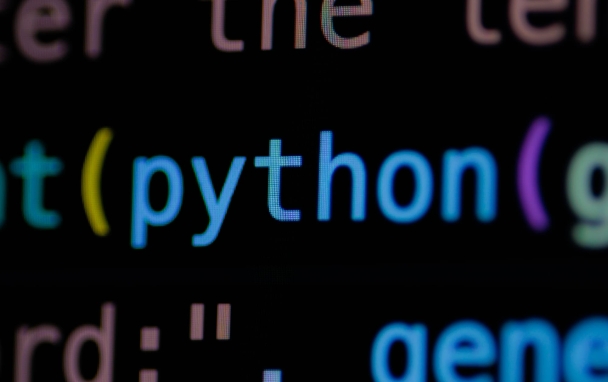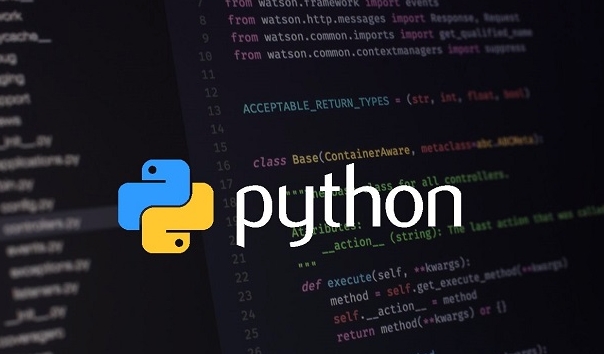The core of Python asynchronous programming lies in coroutines, async/await structure, avoiding blocking operations and task scheduling. 1. Coroutines are the basis of asynchronous, which can pause and resume execution and need to be scheduled through event loops; 2. async/await is used to organize asynchronous code and use asyncio.gather() to implement concurrent tasks; 3. Avoid mixing synchronous and asynchronous code. If using time.sleep() will block the event loop, asyncio.sleep() and related asynchronous libraries should be used instead; 4. Create_task() or TaskGroup() can be used for multi-task scheduling and event loop management for complex tasks to improve program efficiency.

Asynchronous programming in Python is not a new concept, but for many developers, it is still a bit "involved" when used. If you find program stuttering when writing network requests, crawlers, IO-intensive tasks, or want your code to handle concurrent tasks more efficiently, it may be time to understand the asynchronous programming mode.

1. Coroutine is the core of asynchronous
Python's asynchronous programming is built on coroutines. You can understand coroutines as a function that can "pause" and "recover". It does not preemptive switching like traditional threads, but you control the execution order.

For example, a simple asynchronous function:
async def says_hello():
print("Hello") This function will not run directly, you need to hand it over to the event loop to schedule execution. A common practice is to use asyncio.run() in Python 3.7 to start:

import asyncio asyncio.run(say_hello())
The key point is that they will only actually run when you actively wait (await) or schedule these coroutines . Otherwise, a coroutine object is just created and the logic inside will not be executed.
2. async/await is the standard way to organize asynchronous code
Once you start defining functions with async def , you have to get used to using await to call other coroutines. For example, if you want to execute multiple tasks concurrently, you can use asyncio.gather() :
async def task1():
await asyncio.sleep(1)
print("Task 1 done")
async def task2():
await asyncio.sleep(1)
print("Task 2 done")
async def main():
await asyncio.gather(task1(), task2())
asyncio.run(main())This way two tasks start almost at the same time, rather than waiting for one to complete before executing the other.
- Don't call coroutines directly in non-async functions, as they will be "dumb" and have no effect.
- If you use third-party libraries, such as
aiohttporasyncpg, remember to use the asynchronous interfaces they provide, otherwise you will lose the asynchronous advantage.
3. Avoid blocking operations and do not mix synchronous and asynchronous codes
This is the easiest place for beginners to get into pitfalls. For example, the following code:
import time
async def bad_example():
time.sleep(3) # This is synchronized! Will block the entire event loop print("Done") Although the function is async, time.sleep() is synchronous, which will cause the entire asynchronous process to stop. You should use await asyncio.sleep(3) instead, so that you can really release control to the event loop.
Similar problems may also occur in:
- File reading and writing (it is recommended to use
aiofiles) - Database access (using asynchronous drivers such as
asyncpgandmotor) - Network requests (recommended
aiohttpinstead ofrequests)
4. Multitasking and event loop management should be reasonable
For simple scripts, asyncio.run() is enough. But if you want to do more complex task scheduling, such as background resident tasks, timed tasks, or coordination of multiple event loops, you need to have an in-depth understanding of asyncio.create_task() , asyncio.TaskGroup() (Python 3.11), and even manage event loops yourself.
For example:
async def background_task():
While True:
print("Background tick")
await asyncio.sleep(1)
async def main():
task = asyncio.create_task(background_task())
await asyncio.sleep(5) # The main task runs for only 5 seconds task.cancel() # Cancel the background task asyncio.run(main())This method is suitable for some asynchronous services that require long-term operation.
Basically that's it. Asynchronous programming doesn't seem complicated, but in actual projects, it is easy to cause performance problems due to mixed synchronous logic, wrong use of await, or lack of understanding of the event loop mechanism. As long as you clarify the main line, start with coroutines, and gradually introduce async/await and task scheduling, you can write more efficient Python programs.
The above is the detailed content of Asynchronous Programming Patterns in Python. For more information, please follow other related articles on the PHP Chinese website!

Hot AI Tools

Undress AI Tool
Undress images for free

Undresser.AI Undress
AI-powered app for creating realistic nude photos

AI Clothes Remover
Online AI tool for removing clothes from photos.

Clothoff.io
AI clothes remover

Video Face Swap
Swap faces in any video effortlessly with our completely free AI face swap tool!

Hot Article

Hot Tools

Notepad++7.3.1
Easy-to-use and free code editor

SublimeText3 Chinese version
Chinese version, very easy to use

Zend Studio 13.0.1
Powerful PHP integrated development environment

Dreamweaver CS6
Visual web development tools

SublimeText3 Mac version
God-level code editing software (SublimeText3)

Hot Topics
 How does Python's unittest or pytest framework facilitate automated testing?
Jun 19, 2025 am 01:10 AM
How does Python's unittest or pytest framework facilitate automated testing?
Jun 19, 2025 am 01:10 AM
Python's unittest and pytest are two widely used testing frameworks that simplify the writing, organizing and running of automated tests. 1. Both support automatic discovery of test cases and provide a clear test structure: unittest defines tests by inheriting the TestCase class and starting with test\_; pytest is more concise, just need a function starting with test\_. 2. They all have built-in assertion support: unittest provides assertEqual, assertTrue and other methods, while pytest uses an enhanced assert statement to automatically display the failure details. 3. All have mechanisms for handling test preparation and cleaning: un
 How can Python be used for data analysis and manipulation with libraries like NumPy and Pandas?
Jun 19, 2025 am 01:04 AM
How can Python be used for data analysis and manipulation with libraries like NumPy and Pandas?
Jun 19, 2025 am 01:04 AM
PythonisidealfordataanalysisduetoNumPyandPandas.1)NumPyexcelsatnumericalcomputationswithfast,multi-dimensionalarraysandvectorizedoperationslikenp.sqrt().2)PandashandlesstructureddatawithSeriesandDataFrames,supportingtaskslikeloading,cleaning,filterin
 What are dynamic programming techniques, and how do I use them in Python?
Jun 20, 2025 am 12:57 AM
What are dynamic programming techniques, and how do I use them in Python?
Jun 20, 2025 am 12:57 AM
Dynamic programming (DP) optimizes the solution process by breaking down complex problems into simpler subproblems and storing their results to avoid repeated calculations. There are two main methods: 1. Top-down (memorization): recursively decompose the problem and use cache to store intermediate results; 2. Bottom-up (table): Iteratively build solutions from the basic situation. Suitable for scenarios where maximum/minimum values, optimal solutions or overlapping subproblems are required, such as Fibonacci sequences, backpacking problems, etc. In Python, it can be implemented through decorators or arrays, and attention should be paid to identifying recursive relationships, defining the benchmark situation, and optimizing the complexity of space.
 How can you implement custom iterators in Python using __iter__ and __next__?
Jun 19, 2025 am 01:12 AM
How can you implement custom iterators in Python using __iter__ and __next__?
Jun 19, 2025 am 01:12 AM
To implement a custom iterator, you need to define the __iter__ and __next__ methods in the class. ① The __iter__ method returns the iterator object itself, usually self, to be compatible with iterative environments such as for loops; ② The __next__ method controls the value of each iteration, returns the next element in the sequence, and when there are no more items, StopIteration exception should be thrown; ③ The status must be tracked correctly and the termination conditions must be set to avoid infinite loops; ④ Complex logic such as file line filtering, and pay attention to resource cleaning and memory management; ⑤ For simple logic, you can consider using the generator function yield instead, but you need to choose a suitable method based on the specific scenario.
 What are the emerging trends or future directions in the Python programming language and its ecosystem?
Jun 19, 2025 am 01:09 AM
What are the emerging trends or future directions in the Python programming language and its ecosystem?
Jun 19, 2025 am 01:09 AM
Future trends in Python include performance optimization, stronger type prompts, the rise of alternative runtimes, and the continued growth of the AI/ML field. First, CPython continues to optimize, improving performance through faster startup time, function call optimization and proposed integer operations; second, type prompts are deeply integrated into languages ??and toolchains to enhance code security and development experience; third, alternative runtimes such as PyScript and Nuitka provide new functions and performance advantages; finally, the fields of AI and data science continue to expand, and emerging libraries promote more efficient development and integration. These trends indicate that Python is constantly adapting to technological changes and maintaining its leading position.
 How do I perform network programming in Python using sockets?
Jun 20, 2025 am 12:56 AM
How do I perform network programming in Python using sockets?
Jun 20, 2025 am 12:56 AM
Python's socket module is the basis of network programming, providing low-level network communication functions, suitable for building client and server applications. To set up a basic TCP server, you need to use socket.socket() to create objects, bind addresses and ports, call .listen() to listen for connections, and accept client connections through .accept(). To build a TCP client, you need to create a socket object and call .connect() to connect to the server, then use .sendall() to send data and .recv() to receive responses. To handle multiple clients, you can use 1. Threads: start a new thread every time you connect; 2. Asynchronous I/O: For example, the asyncio library can achieve non-blocking communication. Things to note
 Polymorphism in python classes
Jul 05, 2025 am 02:58 AM
Polymorphism in python classes
Jul 05, 2025 am 02:58 AM
Polymorphism is a core concept in Python object-oriented programming, referring to "one interface, multiple implementations", allowing for unified processing of different types of objects. 1. Polymorphism is implemented through method rewriting. Subclasses can redefine parent class methods. For example, the spoke() method of Animal class has different implementations in Dog and Cat subclasses. 2. The practical uses of polymorphism include simplifying the code structure and enhancing scalability, such as calling the draw() method uniformly in the graphical drawing program, or handling the common behavior of different characters in game development. 3. Python implementation polymorphism needs to satisfy: the parent class defines a method, and the child class overrides the method, but does not require inheritance of the same parent class. As long as the object implements the same method, this is called the "duck type". 4. Things to note include the maintenance
 How do I slice a list in Python?
Jun 20, 2025 am 12:51 AM
How do I slice a list in Python?
Jun 20, 2025 am 12:51 AM
The core answer to Python list slicing is to master the [start:end:step] syntax and understand its behavior. 1. The basic format of list slicing is list[start:end:step], where start is the starting index (included), end is the end index (not included), and step is the step size; 2. Omit start by default start from 0, omit end by default to the end, omit step by default to 1; 3. Use my_list[:n] to get the first n items, and use my_list[-n:] to get the last n items; 4. Use step to skip elements, such as my_list[::2] to get even digits, and negative step values ??can invert the list; 5. Common misunderstandings include the end index not






